Central Texas farmers facing lack of hay, reduced cotton crop due to exceptional drought
THRALL — Anthony Gola looked at less than an inch of water left in his tank to quench his cattle's thirst in eastern Williamson County and sighed.
"This is pretty rough here," he said.
Like many farmers and ranchers in the county, Gola is being hit hard by the drought. The cotton crop has been drastically reduced because of the lack of rain, according to farmers and a cotton gin owner. Hay is in short supply to feed livestock because the drought killed the grass, according to county extension service agents. Farmers and livestock producers face the same situation in Bastrop County with a drastic lack of hay.
According to the U.S. Drought Monitor map, 100% of Williamson County and 98% of Bastrop County are in exceptional drought, which is the highest possible level.
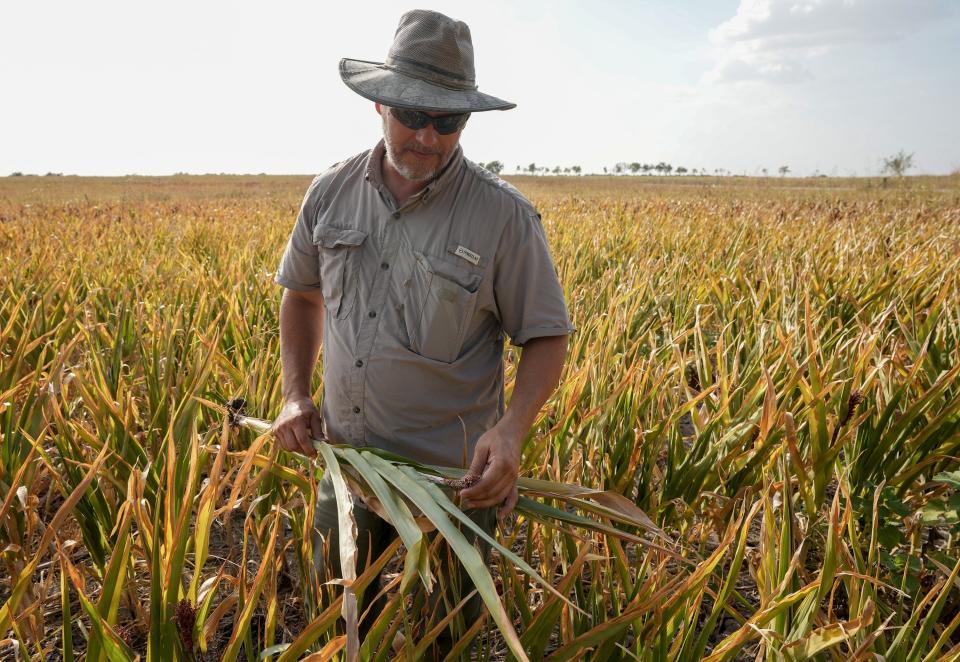
More: Travis County bans use of fireworks as harsh Texas drought continues
"Exceptional drought means that this type of drought (short-term) tends to happen this time of year (early fall) with this intensity only about once every 50 years," said John Nielsen-Gammon, the state climatologist and a meteorology professor at Texas A&M University.
It would take about 1.5 to 2 inches of rain by the end of September to get out of exceptional drought and into the "slightly better category of extreme drought," he said.
In the Taylor area of eastern Williamson County, about two-tenths of an inch of rain fell from June through August, said Monty Oaks, a meteorologist with the National Weather Service. The average amount of rain in the Taylor area during the same period is about 6 inches.
Oaks said the weather service had no stations in Bastrop County, but rainfall in the area could be compared with what nearby Austin-Bergstrom International Airport has received. The airport had about 2.5 inches of rain from June through August compared with its average of about 8 inches for those three months, he said.
By last Tuesday, parts of eastern Williamson County hadn't had any rain since Memorial Day, said Gary Pastushok, the Williamson County agent for the Texas A&M AgriLife Extension Service. "This is critically bad," he said. "It's all really bone dry."
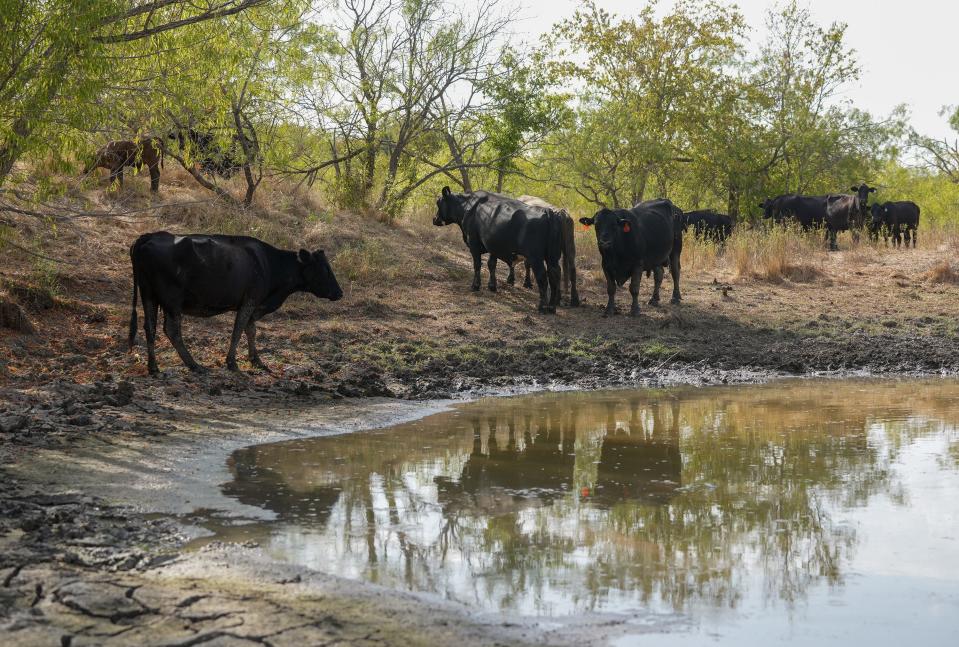
More: The times it never rained: 3 devastating historic Texas droughts
If Williamson County gets an average amount of rain in September and October, it could help farmers planting winter wheat, winter rye and winter oats starting in November, Pastushok said. He said that if the county receives 1.5 inches or less this week it wouldn't help because soil temperatures are so warm the water will just evaporate.
The spring, however, began well with enough rain that farmers were able to grow a good crop of field corn, he said.
"A lot of farmers in the Taylor area are saying they harvested 100 to 125 bushels an acre, which is above normal," he said.
Field corn is sold to feed livestock in feedlots and also is used to make renewable fuels such as ethanol. It is the No. 1 crop grown in both Williamson and Bastrop counties, according to county extension agents. Farmers usually plant field corn in February and March, Pastushok said.
But cotton isn't planted until May and June, he said. Farmers don't use irrigation to grow crops in Williamson County, so they have to rely on the rain, Pastushok said. Gola said he practices dryland farming because there's no groundwater to use for irrigation.
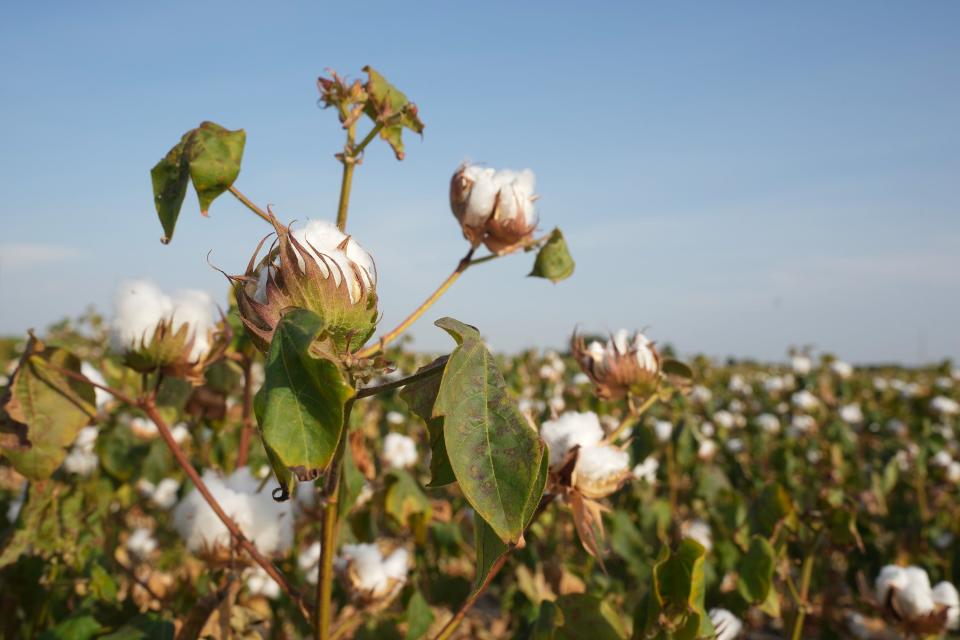
He said the cotton didn't do well this year because there was no rain after it was planted.
"All the farmers right now are yielding about one-third of what they would normally yield," said Clement Strmiska. the owner of Waterloo Cotton Gin northeast of Taylor.
During a good year, farmers usually produce two to three bales of cotton per acre, he said. A bale weighs an average of 480 pounds, he said. This year, farmers are getting a bale of cotton per acre, or even half a bale, Strmiska said.
Gola, who farms corn, cotton and grain sorghum on about 3,000 acres in Williamson, Travis, Milam and Bell counties with his brother, said their cotton crop was going to be about 50% below what they usually expect.
But the worst impact of the drought is on the hay crop, he said. Gola relies on being able to cut Bermuda grass from his pastures three times during the spring and summer to use as hay for his livestock. This year, like most farmers, he was able to cut the grass only once before the drought set in and it stopped growing.
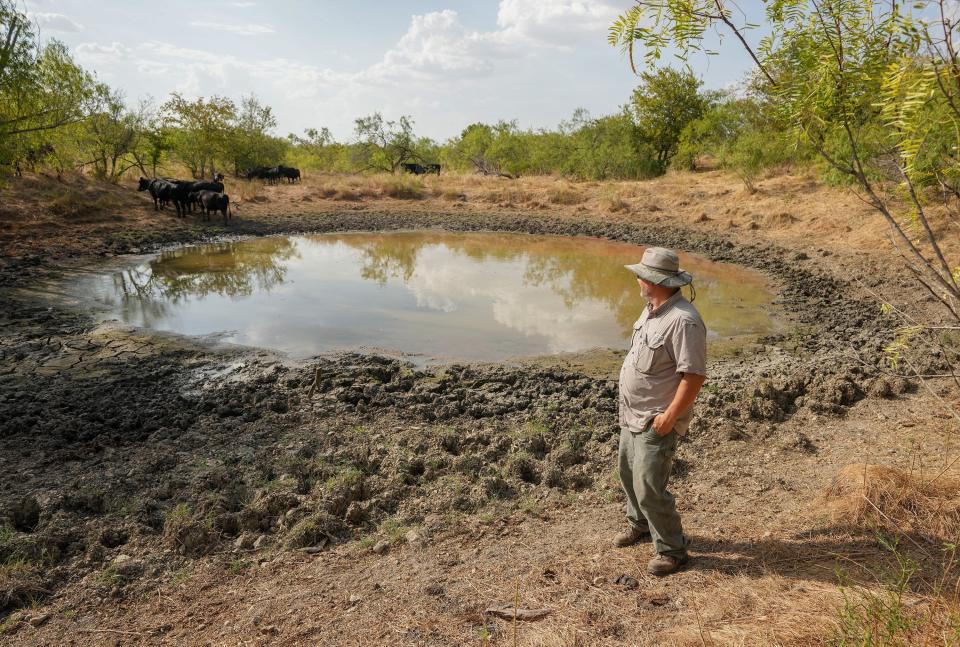
Gola also had to truck in water because some of the stock tanks he relies on for his cattle have dried up. Stock tanks are dug by ranchers to hold rainwater. He said he's moving cattle around to pastures that have more water.
Strmiska, who also owns Granger Feed and Supply in that town, said he's selling more feed than usual at his store because of the shortage of hay.
"People are baling corn stalks to feed cows and feeding them less quality hay, so they have to add protein to keep cows from losing weight," he said. He is selling protein tubs, which consist of 225 pounds of cooked molasses filled with protein sources such as soy bean meal.
The lack of hay is also an issue in Bastrop County, said Dakota Kempken, the Bastrop County agent for the Texas A&M AgriLife Extension Service.
"A lot of livestock producers had to cull large portions of their herd because they can't restock," he said.
A lack of water for livestock isn't as much of an issue as it is in Williamson County because livestock raisers have wells, he said.
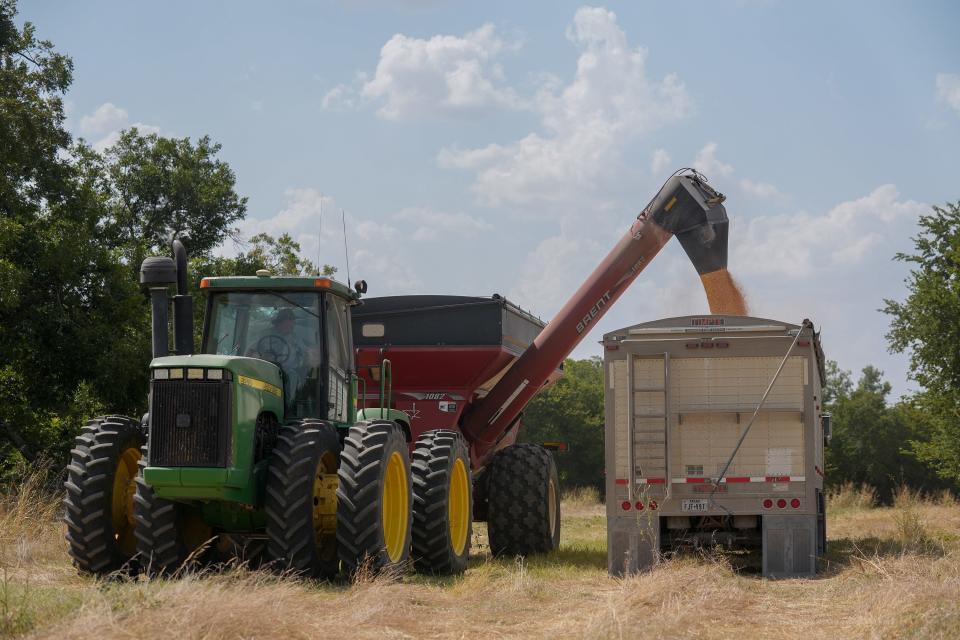
He said he also expects the pecan crop in Bastrop County to yield fewer nuts due to the lack of water. About half of the pecan growers, including the bigger producers, irrigate but half do not, Kempken said.
Pecan harvesting usually starts in October. However, Bastrop County pecan grower Gary Lehmann said he can already tell he's going to have a better crop this year than last year. He said he irrigates his pecans but has noticed in areas where the pecan trees aren't irrigated that the trees are dropping nuts on the ground before they are ripe. Green pecans that drop off trees won't ripen.
Farmers in Williamson County are facing other pressures, such as increasing development, including the Samsung plant in Taylor. The total number of acres being farmed or used as pasture in Williamson County has fallen from about 309,000 in 2019 to 291,000 in 2023, said Craig Englemann, the executive director of the U.S. Department of Agriculture Farm Service Agency in Williamson County.
But Gola said he and his brother aren't giving up farming anytime soon, even though it's been a terrible summer.
"We have put in the time, money, and work," he said. "We must carry on."
This article originally appeared on Austin American-Statesman: Hay, cotton farmers hurt by exceptional Central Texas drought

